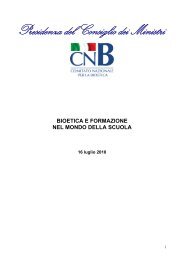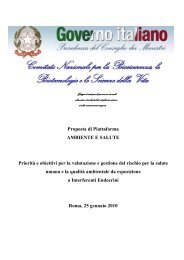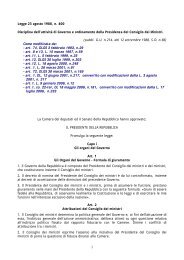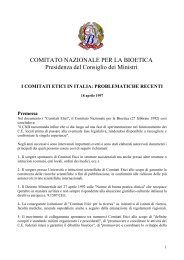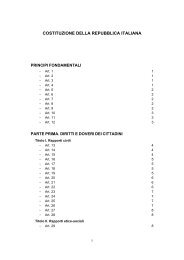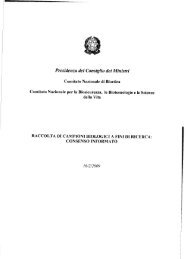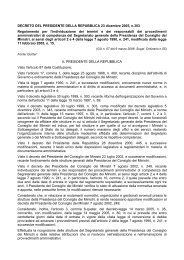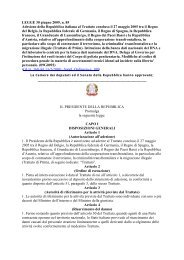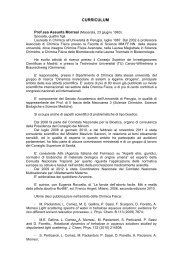President
President
President
You also want an ePaper? Increase the reach of your titles
YUMPU automatically turns print PDFs into web optimized ePapers that Google loves.
development of sport, even when not directly involved in the phenomenon of<br />
commercialisation. Therefore commercialisation is (or has become) a condition of<br />
sport, which can lead to wrong behaviours, but is not wrong in itself or, in any<br />
case, it would be illusory to think of eliminating it. But if this is true, then the<br />
problem seems to be about boundaries rather than principles: we can be firm<br />
about the principles, asking what the limit is beyond which the principles are<br />
violated. When does commercialisation become “excessive”? Where is the limit?<br />
Maybe we could push beyond the analysis and think that it is not even a question<br />
of quantitative limits, which are difficult to pinpoint, but rather an issue of how<br />
commercialisation, excessive or not, affects the intrinsic value of fair play: an<br />
athlete who informs his/her own sporting life and behaviour on fair play principles,<br />
and then even obtains a financial prize for his/her victory, does not violate any<br />
sport ethics principles.<br />
1.5. Winning at any cost?<br />
According to some analyses, however, the advent of commercialisation in the<br />
world of sport has acted as a flywheel for the spreading of a mentality aimed at<br />
emphasising the agonistic aspect over the fun aspect, and allowing “winning at any<br />
cost” to prevail over “the important thing is to participate”: as an American football<br />
coach declared, “winning is not the most important thing, it is the only thing that<br />
counts”. In this type of competition, according to some pessimistic but very realistic<br />
analyses, it becomes rather illusory to think of winning the battle against the<br />
spreading of doping only with repressive or “educational” instruments, and being<br />
unable or unwilling to tackle the roots of the problem: the mentality focused on<br />
winning at any cost, overcoming the limits, achieving a record, undoubtedly<br />
supported by the financial interests of the world of sport and also – in connection<br />
to them – by what the fans expect (also because of television) from sporting<br />
events.<br />
We can also reasonably presume that the link between that mentality and the<br />
growing economic interests will intensify, in the near future, moral problems in<br />
sport, motivating the research of new methods of manipulation aimed at satisfying<br />
the principle which seems to dominate today’s sporting practice: overcoming limits,<br />
which – we have seen – seems to be the original sin of modern sport, at least of<br />
agonistic and competitive sport. In this context, we must not underestimate the fact<br />
that the development of biomedical research and the identification of the genes<br />
involved in controlling an increasing number of physiological processes, could put<br />
at our disposal new ways of intervening on human physiology. This is the so-called<br />
genetic doping, which uses for non-therapeutic purposes the transfer methods<br />
used for somatic gene therapy. Genetic doping has officially become part of the<br />
WADA (World Anti-Doping Agency) Anti-doping Code following the Copenhagen<br />
congress in March 2003 and since then WADA started research programmes<br />
aimed at identifying methodologies suitable to discovering the eventual use of this<br />
methodology 151 .<br />
151 A lot of uncertainty still surrounds the effective practicability of this form of doping. We must<br />
in fact remember that, in the current state of knowledge, the use of gene transfers in somatic gene<br />
109




